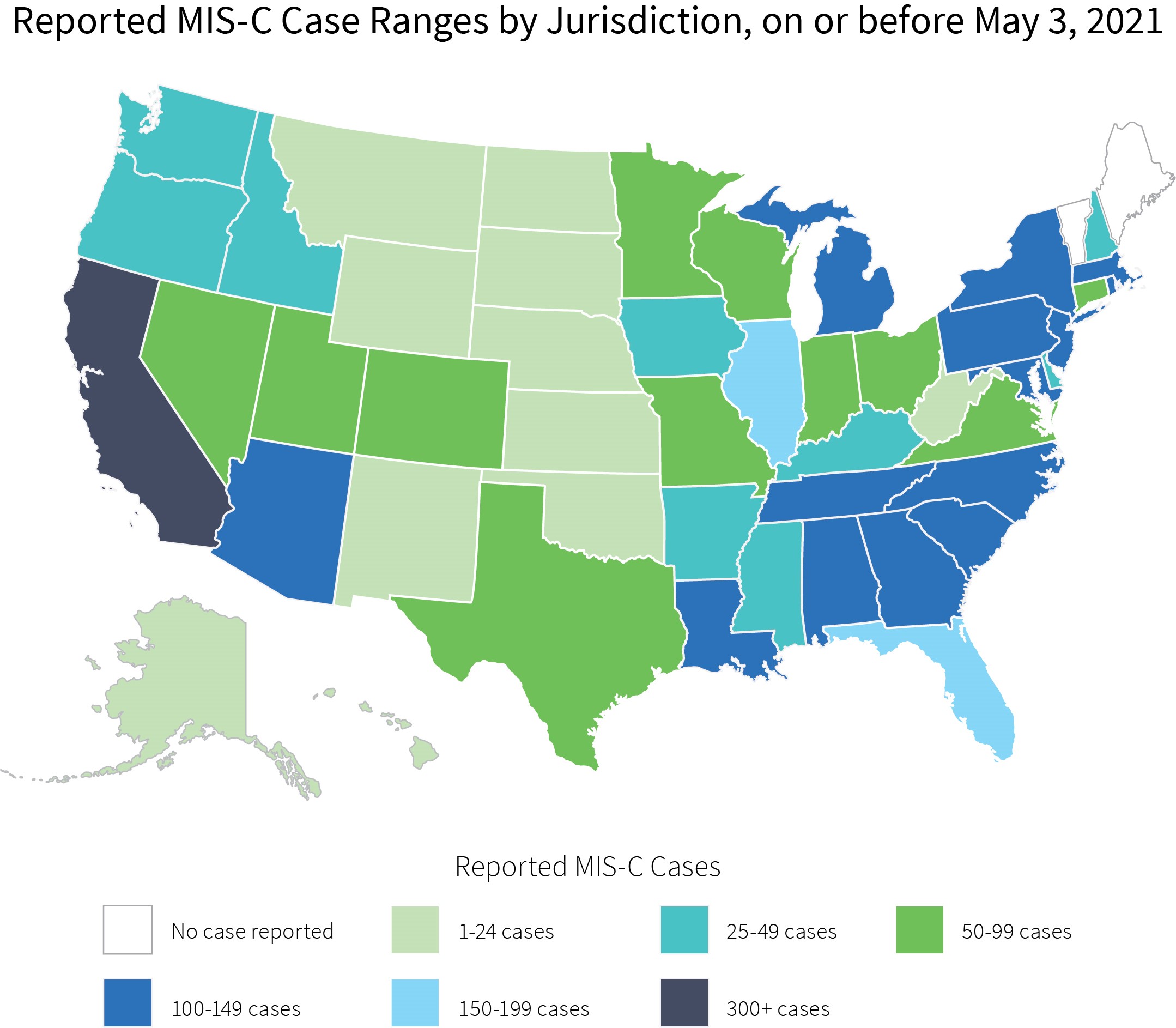As new COVID-19 variants, including the Delta variant, are spreading in the United States, children are making up a growing share of new cases. Children account for nearly 21% of new COVID-19 cases as of April 2021, according to the American Association of Pediatrics.
Vaccination remains the best weapon against COVID-19. The Centers for Disease Control (CDC) states vaccines are approved for children 12 years of age and older and recommends vaccination as soon as possible.
Contracting COVID-19 has implications for pediatrics, specifically the prevalence of multisystem inflammatory syndrome in children (MIS-C), which has increased since the pandemic began. In this blog, we’ll take a deeper look at MIS-C associated with COVID-19.
COVID-19 and Children
As the pandemic unfolded, more children were reported as having fallen ill to a Kawasaki-like disease around the world identified as multisystem inflammatory syndrome (MIS). MIS can affect children (MIS-C) and adults (MIS-A). It is a rare but serious condition associated with COVID-19 in which different body parts become inflamed, including the heart, lungs, kidneys, brain, skin, eyes, or gastrointestinal organs.
According to a study published by the National Library of Medicine, the most common symptoms included:
- Fever (97%)
- Gastrointestinal symptoms (80%)
- Skin rashes (60%)
- Shock (55%)
- Conjunctivitis (54%)
- Respiratory symptoms (39%)
Less common presentations included:
- Neurologic problems (33%)
- Skin desquamation (30%)
As of May 3, 3021, the CDC reported:
- 3,742 total MIS-C patients meeting case definition
- 35 total MIS-C deaths meeting case definition
The CDC reports that additional patients are under investigation, and after review of additional clinical data, patients may be excluded if there are alternative diagnoses that explained their illness.
The geographic occurrence of MIS-C can be seen in the CDC chart below:

Key Findings
The CDC reports that the median age of patients with MIS-C was 9 years, and half of them were children between the ages of 5 and 13 years. Reported cases were higher in children of color, with 63% occurring in children of Hispanic/Latinx heritage and Black/Non-Hispanic ethnicity.
A total of 99% of MIS-C patients tested positive for SARS CoV-1 (the virus that causes COVID-19), with the remaining 1% having had contact with someone with COVID-19. Male patients represented 60% of reported cases.
Conclusions
Vaccines continue to be our best protection against COVID-19 and MIS-C. It is critical that we as healthcare professionals encourage patients and their children 12 years and older to get vaccinated while we wait for vaccine protocols to be announced for children under 12 years of age.
For more information, please visit CPSpharm.com.
-----
i https://www.aappublications.org/news/2021/04/19/pediatric-covid-cases-041921. Accessed 6.30.21.
ii https://www.cdc.gov/coronavirus/2019-ncov/vaccines/keythingstoknow.html?s_cid=10524:%2BWhat%20%2Bare%20%2Bthe%20%2Bvaccines%20%2Bfor%20%2Bcovid%20%2B19:sem.b:p:RG:GM:gen:PTN:FY21. Accessed 6.30.21.
iii Multisystem Inflammatory Syndrome (MIS) (cdc.gov). https://www.cdc.gov/mis/. Accessed 6.30.21.
iv https://pubmed.ncbi.nlm.nih.gov/33463127/. Accessed 6.30.21.
v https://www.cdc.gov/mis-c/. Accessed 6.30.21.
vi https://covid.cdc.gov/covid-data-tracker/#mis-national-surveillance. Accessed 8.30.21.